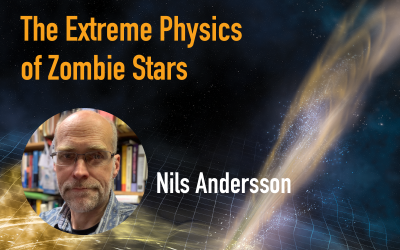Abstract:
A neutron star is born when a massive star runs out of nuclear fuel and dies in a supernova explosion. The object that emerges when the dust settles – effectively, a zombie star – involves physics at the edge of our understanding (and beyond!). We need to consider many extremes, in terms of density, pressure, temperature, magnetic fields and so on, which cannot be tested in our laboratories. This is an immense challenge, yet increasingly precise astrophysical observations (both electromagnetic and through gravitational waves) allow us make progress. This talk provides a map of this journey; where we are and where we are going.
About the Speaker:
Nils Andersson is Professor of Applied Mathematics at the University of Southampton. He is an expert on Einstein's theory of relativity and related astrophysics and has served as President of the International Society of General Relativity and Gravitation. His research mainly concerns black holes, neutron stars and gravitational waves. He has written a comprehensive textbook on gravitational-wave astronomy as well as a series of children’s books introducing science concepts to younger readers. For several decades he has pursued many issued relevant to the emerging area of gravitational-wave astronomy. His current work focusses on the fascinating physics that neutron stars represent, from the state and composition of matter to the dynamical role of superfluids and superconductors.



